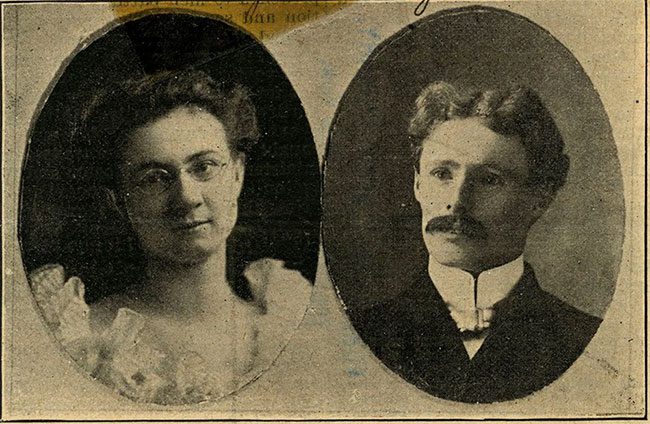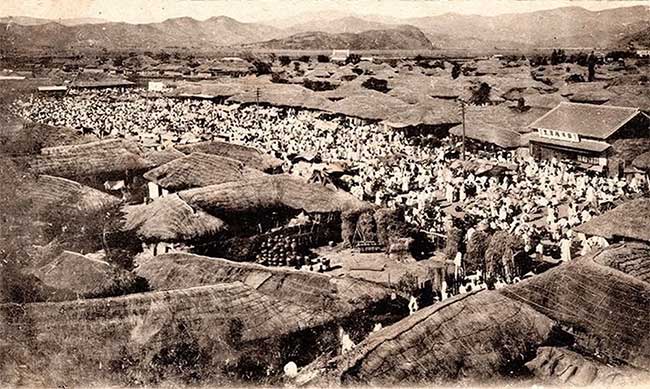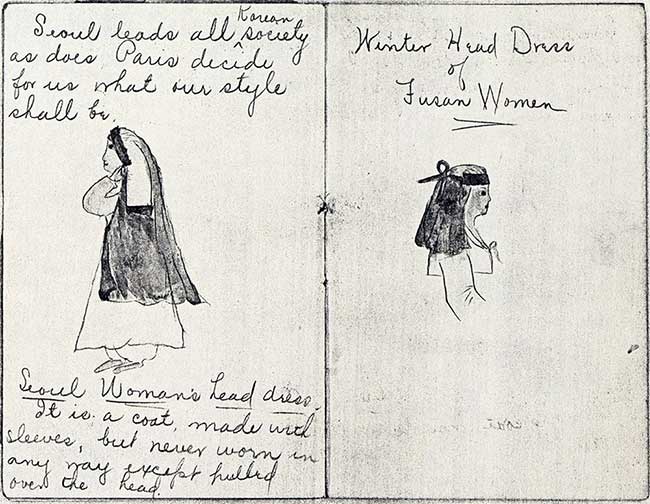Back in March 1900, the streets and markets of Daegu were filled with anticipation and wonder. The locals buzzed with excitement about the arrival of a “mysterious box”—a magical box that emitted strange sounds they had never heard before.
Daegu and the “Mysterious Box”
“The Mysterious Box”—known to the world as the “piano”—was gifted to two missionaries, Richard and Effie Sidebotham, as a farewell present from their friends and family.

Missionaries Effie and Rev. Richard H. Sidebotham. (Photo: Korea Times).
The Sidebotham family arrived in Korea in November 1899 and spent at least a few weeks in the capital, Seoul, before being assigned to the city of Daegu. Once they settled into their new home, they donated their most cherished possessions to the local community—including the piano.
On March 26, the piano, “carefully preserved for the ocean voyage”, was transported up a river in Busan and down the Nakdong River to the Samunjin ferry terminal in Daegu. A team of 31 men escorted the piano to Korea and carried it to the missionaries’ residence on March 28.
An article on the homepage of the Presbyterian Church History Society noted that the Korean people in Daegu initially disliked the piano because it produced a very strange noise. This is why, at that time, the piano was referred to as the “mysterious box.” However, this piano eventually became a part of the legend and culture of Daegu.
In 2013, the Daegu Daily declared this piano to be the first piano in Korea. The discovery was made by Sohn Tae-ryong, President of the Korean Music Literature Association.
A letter sent by the Sidebotham family to the Busan Museum in 2009 confirmed this fact, and it was quite surprising that many locals accepted this claim as an obvious truth.

Daegu market in the early 20th century. (Photo: Korea Times).
Pianos of the 1980s and 1990s
In the spring of 1884, Edward H. Parker, 34 years old, was appointed to the city of Busan as the British Vice Consul. At that time, the foreign community in Busan mainly consisted of Japanese merchants and a small number of Westerners working for the Korean Royal Customs.
Parker’s arrival in the Busan community was highly regarded as he was well-educated (having studied Chinese from 1869 to 1871), knowledgeable about many cultures from his travels (visiting Mongolia and various ports across Asia), and musically talented.
In a letter to her family in America, Jenny Lovatt (wife of Busan Customs Commissioner William Lovatt) wrote in May 1884: “Mr. Parker brought a piano, the first piano in Fusan [Busan].”
For nearly a year, Parker entertained friends and visitors with his excellent piano skills, but by the end of May 1885, he was transferred to the capital, Seoul. Jenny was deeply saddened by Parker’s departure as he had a “perfect piano.”
It is possible that Parker brought his piano to Seoul, but considering the events that unfolded in the following years, he likely had little time to play beautiful music.
Additionally, by the 1890s, there were at least a few pianos in the capital, not just in the homes of missionaries.

Missionary Effie Sidebotham illustrated Korean fashion at the time through a series of drawings, undated. (Photo: Presbyterian).
In September 1894, a concert was held at Seoul Union by three members of the American Legation guard. According to one guest, “the music was played on the porch and the soldiers sat outside; it was a wonderful night.”
Some of the musical officers played enchanting tunes on the piano, guitar, and banjo. In addition to the military performance, the wife of a Russian architect contributed her singing. A lavish dinner was served in the library, and “there was no more perfect combination.”
The American ambassador to Korea, John Sill, also brought a piano with him when he arrived in 1894. In his letters home, he didn’t write much about his piano, instead mentioning the shipping crate that later became a flower pot for his indoor plants. He carefully strung vines for his plants and named his cozy little space “the Hanging Garden of Babylon.”

Portrait of Richard H. Sidebotham in 1907 and a letter to the Foreign Mission Board of the Presbyterian Church in America. (Photo: Presbyterian).
Before 1900, a significant number of pianos had appeared in Korea. Mr. R.D. Mackie, representative of Robinson Piano Co. (with offices in Shanghai, Hong Kong, and Singapore), arrived in Seoul on July 10, 1898, and spent a week to “repair and tune pianos.”
By the end of that year, when Ferdinand Krien (the German representative in Korea) left Seoul, he sold most of his household items, including “a good English piano (made by Collard & Collard, London), a nearly new high wheel bicycle, and a set of British saddles and reins that were top-notch.”
It is also quite possible that the Korean palace owned a piano before the “first piano in Korea” belonging to the Sidebothams. According to the November 1901 edition of the Korean Magazine (an English publication in Seoul):
“Around 2 AM on the 16th, one of the houses behind the Royal Library, just west of the US Legation, caught fire for unknown reasons. If there had been any assistance, the fire could have easily been contained before spreading to the main building. But it seemed very deserted here, and we lost a very valuable government building. The library contained many valuable books, all of which were destroyed along with the furniture, including a piano.”
So, what truly is the “first piano in Korea”? That question may take a long time to find the most accurate answer.

Obituary of Richard Sidebotham in 1908. (Photo: Presbyterian).


















































